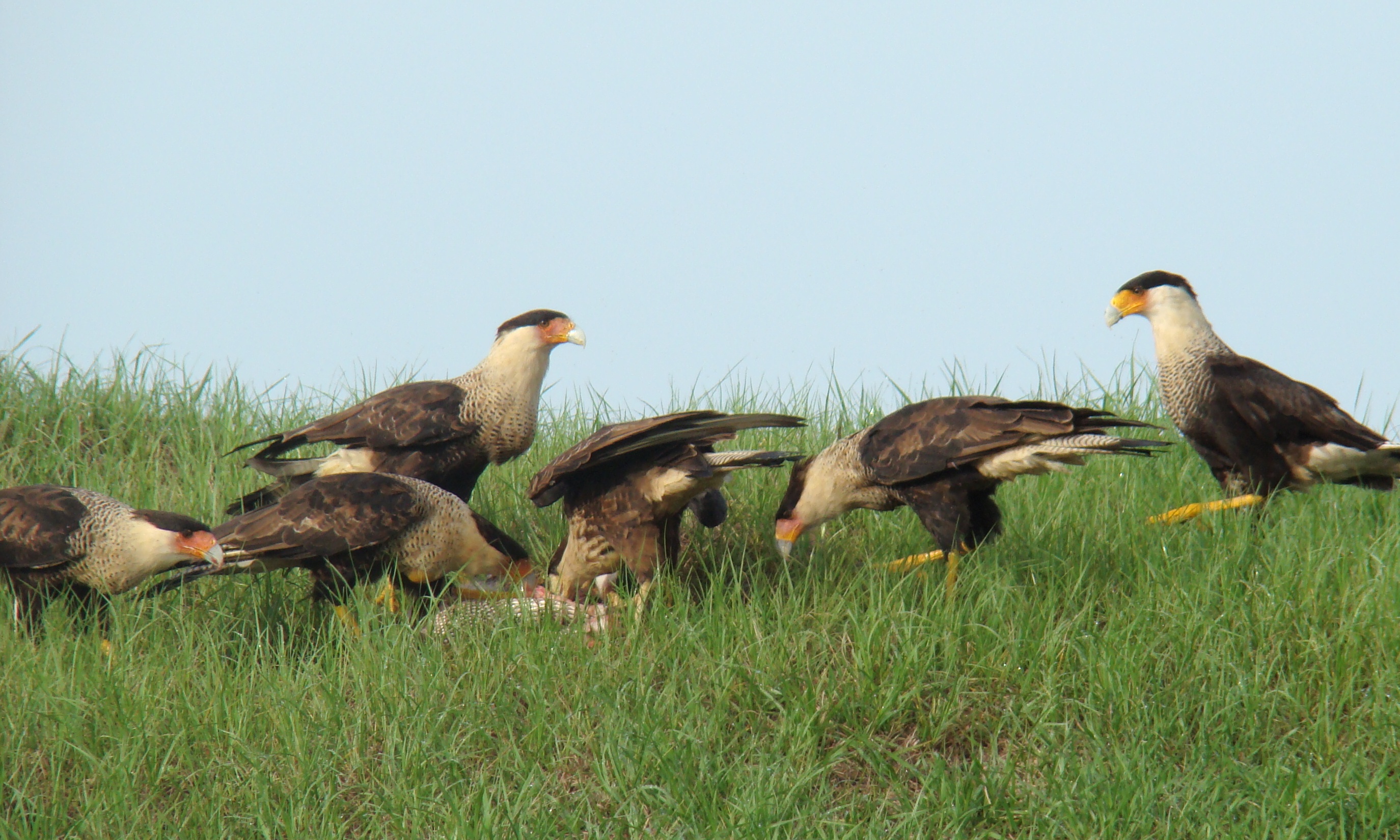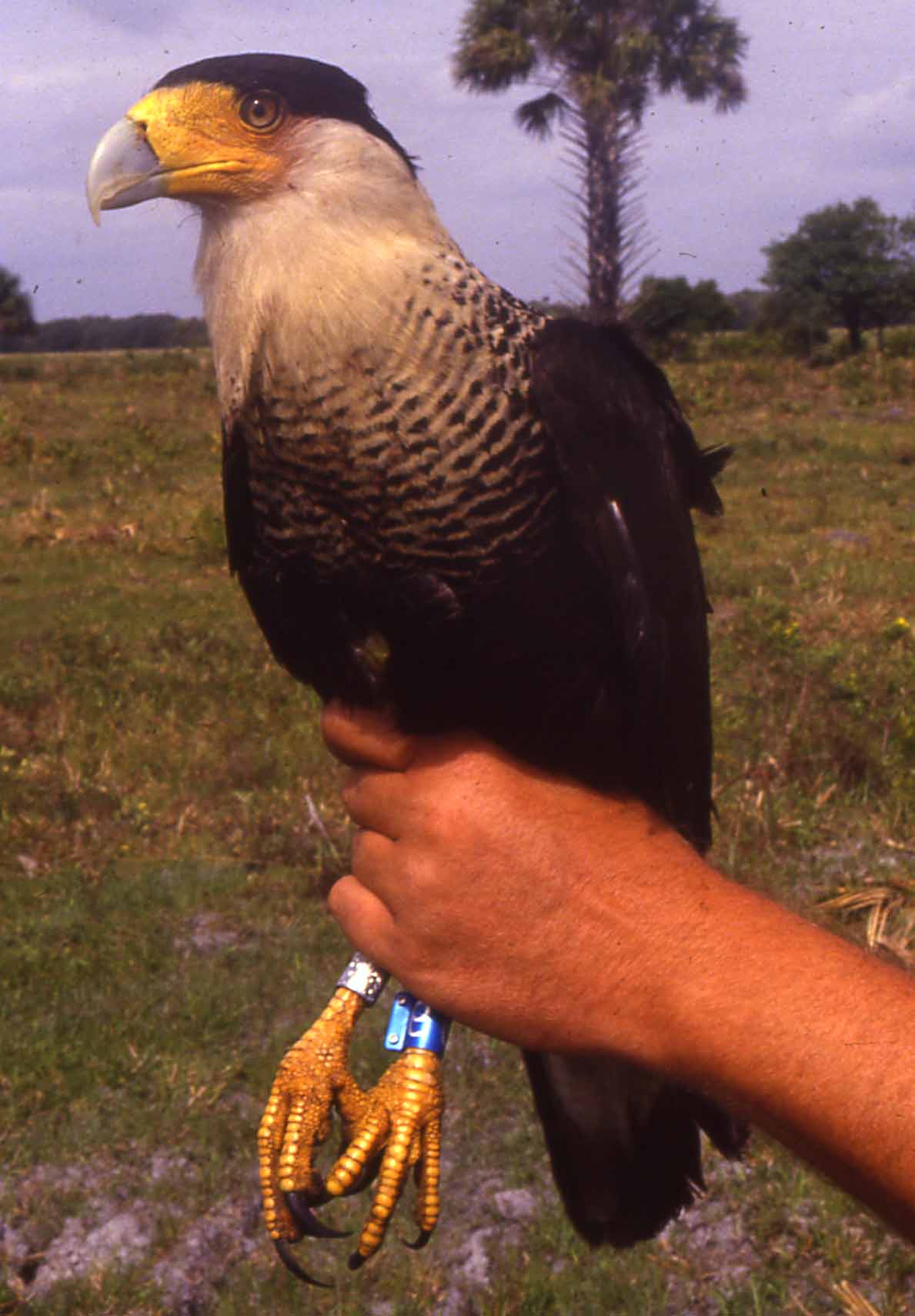Methods
Summary
A group of caracaras enjoying a lunch of armadillo

Adult caracara in Florida wearing the US Fish and Wildlife Service band and the colored band

I have used these methods of capturing, banding, and tagging caracaras successfully for over 20 years in Florida, and these GPS transmitters have already been used on several individuals there, so we know they are appropriate for use on caracaras in Arizona. Finally, all this capturing and handling requires a lot of permits, both federal and state, all of which are in my possession.
Once caracara locations are downloaded from the transmitter manufacturer's website, they are entered into a geographic information system (GIS) program, which can be used easily to map the movements and favorite feeding and roosting sites of the caracaras. The interactive website we plan to develop will allow website visitors to visualize the movements and locations of individual birds and to learn about the behaviors and biology of this unique raptor.
Challenges
Because of their intelligence, caracaras can be challenging to capture. The appropriate capture site will have to be carefully chosen and the net carefully set. But we have captured caracaras in Florida with this method, so we have every reason to expect we will be successful in Arizona. As noted, the area in central Arizona used by the wintering groups of caracaras is quite large, so a lot of driving and regular communication among the researchers via cellphone will be required, when monitoring the large groups and when organizing the trapping sessions. However, all team members have extensive experience observing, trapping, and handling raptors, and we are all knowledgeable about the logistics required to execute such a project, so we are confident we will be successful.
Pre Analysis Plan
Location data for individual caracaras will be mapped in GIS. Locations can be used to create a home range, the area typically used by a caracara. When tagged caracaras leave central Arizona, their migratory pathways can be identified. Tying locations to habitats on the ground, using GIS and aerial photography along with some ground verification of habitats, will allow us to learn which habitats are particularly important for caracaras in this region.
Protocols
This project has not yet shared any protocols.